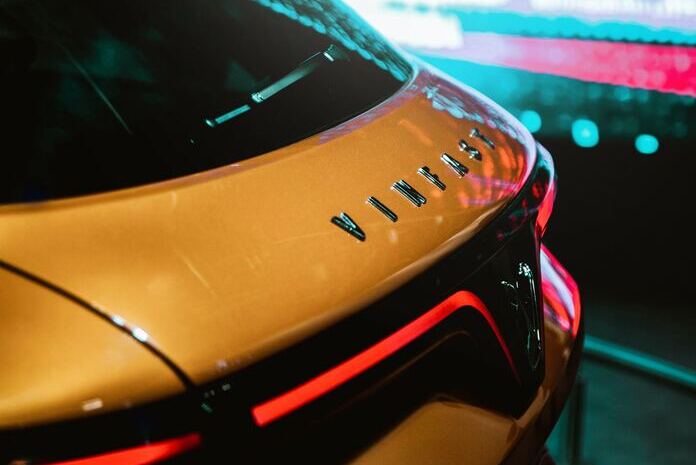VinFast (NASDAQ:VFS), the Vietnam-based electric vehicle (EV) enterprise, made its public debut this week following a reverse merger with a special purpose acquisition company (SPAC) Black Space Acquisition Co. (BSAQ). The listing of VinFast resulted in a remarkable surge, propelling its market capitalization beyond $85 billion by the end of trading on Tuesday, August 15. To add context, the market caps of America’s top two automakers, General Motors (NYSE:GM) and Ford (NYSE:F), stand at $45.1 billion and $47.2 billion respectively. VinFast’s entry into the market is a significant development, given the recent quietude in the U.S. IPO arena following a record-breaking year of new listings in 2021. During this period, numerous firms embarked on public offerings, many through the expedited SPAC merger route, allowing fledgling, non-profitable startups to bypass the complexities of traditional IPO procedures.
Reflecting on the EV SPAC Trend
Particularly within the realm of green energy companies, the SPAC avenue was seized by various emerging EV brands, including Nikola (NASDAQ:NKLA), Fisker (NYSE:FSR), Lordstown Motors (RIDEQ), and Lucid Motors (NASDAQ:LCID), all opting for mergers with these popular “blank check companies.”
While VinFast presently garners attention for surpassing the market caps of established Detroit automakers, this narrative has unfolded repeatedly since 2020, notably with Nikola, one of the first EV firms to enter the market through a SPAC merger that year.
At a certain point, the Chinese EV entity NIO also commanded a valuation surpassing that of General Motors. In 2021, Lucid Motors’ market cap outstripped those of Ford and General Motors. Rivian (RIVN), which followed the conventional IPO route in 2021, reached a valuation exceeding $170 billion at its peak—surpassing the combined market caps of both Ford and General Motors.
The Deflation of the EV and SPAC Bubbles in 2022
Subsequent to their zenith in 2021, both the EV and SPAC bubbles deflated the following year. Since then, numerous SPACs liquidated due to their inability to secure merger targets within the stipulated timeframes.
Regarding EV stocks, many presently trade significantly below their peak values. For instance, Rivian, Lucid Motors, and NIO currently boast market caps of $19.9 billion, $14.5 billion, and $19.2 billion, respectively. While each company had individually surpassed Ford at its peak, their combined market cap now only moderately exceeds Ford’s.
VinFast Retains Higher Valuation Than Ford and General Motors
Returning to VinFast, initial plans involved a 2021 listing with a valuation of $60 billion. However, the market landscape has since shifted dramatically, evident in the diminished valuations of startup EV brands.
VinFast secured an equity value of $23 billion through its merger with BSAQ. Despite undergoing a significant descent from its initial zenith, the stock recently closed above $30—triple its IPO price—and indicated a market cap around $70 billion. However, in current trading, the stock has plummeted by almost 14%, bringing its value down to approximately $60 billion, still surpassing that of both Ford and General Motors.
Although the stock has relinquished a considerable portion of its gains within this volatile inaugural trading week, valid reasons exist for skepticism regarding VinFast’s valuation beyond the recurring pattern of startup EV companies experiencing rapid boom-to-bust cycles.
Mixed Reviews for VinFast’s Models
Significantly, while models from Rivian and Lucid Motors have garnered enthusiastic praise from analysts, the same cannot be said for VinFast. In May, Scott Evans of MotorTrend expressed frank disappointment with VinFast’s VF8, stating, “I’d be embarrassed to look a customer in the eye when handing over the keys to this vehicle.”
In terms of financials and other metrics, VinFast delivered only 11,300 vehicles in the first half of 2023, despite possessing an annual production capacity of 300,000 vehicles. Additionally, the company is in the process of establishing a new plant in North Carolina with an anticipated annual capacity of 150,000 vehicles.
VinFast’s primary markets include the U.S., Canada, Europe, and Vietnam. In its merger presentation, VinFast compared itself to other EV companies, highlighting its production capacity, which exceeds that of Rivian and Lucid Motors. The company targets a 196% YoY revenue growth in 2023, surpassing the growth expectations of Rivian, Lucid Motors, and Polestar (PSNY) at 145%, 53%, and 30% respectively.
VinFast also introduced unique metrics, such as “equity value/cumulative deliveries,” to underscore its valuation appeal compared to other EV firms. However, this metric considers VinFast’s deliveries of internal combustion engine (ICE) vehicles prior to its transition to a pure-play EV company in 2019.
Questioning VinFast’s Overvaluation
In its merger presentation, VinFast projected $1.875 billion in revenues for this year, resulting in a 2023 price-to-sales multiple of approximately 32x, considering its current pro forma market cap of around $60 billion.
In contrast, Rivian boasts a 2023 price-to-sales multiple of 4.62x, while Lucid Motors—perceived as one of the most overvalued startup EV companies—trades at roughly 18x. Despite the ongoing sell-off in the stock, VinFast’s current substantial valuation appears unjustifiable, similar to the extraordinary valuations observed for Nikola, NIO, and Rivian at their pinnacles.
The initial rally in VinFast was seemingly driven by speculation and the “scarcity effect.” Due to approximately 90% of SPAC shareholders opting to redeem their units, the public ownership in VFS is minimal, and excluding BSAQ sponsor shares, a mere 0.07% of VinFast’s total shares are currently available for trading.
Such narratives often yield unfavorable outcomes for investors, and it is reasonable to expect that VinFast’s valuation will eventually realign to more realistic levels.
Featured Image: Unsplash @ Cook aynne















